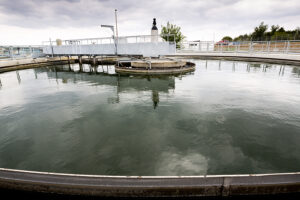New pyrolysis treatment solution to utilise excess wastewater sludge

Danish district heating company DIN Forsyning operates 16 treatment plants in two local municipalities. In total, these treat about 22 million m3 of wastewater each year, according to the company.
In the treatment process, 15,000 tons of excess sludge with high phosphorus content is produced, and its high nutrient value makes it a valuable fertiliser for agriculture.
The company said there is a high risk that the sludge contains harmful environmental contaminants like PFAS that pollute the soil and groundwater – adding to the agricultural industry’s CO2-emissions.
With the substantial amount of sludge involved, DIN Forsyning added it was crucial to find a way to utilise the sludge's positive effects – without negative side-effects. So it developed a new type of plant.
“During pyrolysis, sludge is heated to 650°C, followed by combustion of the pyrolysis gases at over 1,000°C. Studies have shown that compounds such as PFAS breaks down under the intense heating," said project manager and business developer at Din Forsyning, Kim Stenholdt Madsen.
Danish biomass and pyrolysis technology company Dall Energy will deliver the pyrolysis-based plant, which is based on cutting-edge technology supported by the Danish Energy Agency.
"We have developed a technology that converts waste streams into energy and other useful products. This solution for the DIN Forsyning-plant is an excellent example of how we can turn waste-water sludge into an environmentally friendly and efficient solution for agriculture," commented Dall Energy's MD Jens Dall Bentzen.
"Credit to DIN Forsyning for being forward-looking and for embracing the value of pyrolysis technology. A technology with enormous potential – not only in terms of wastewater sludge, but also for CCS and for the utilisation of excess fibres from biogas production.”
Kim Stenholdt Madsen continued: “In addition to wastewater sludge, the pyrolysis plant will also be able to utilise by-products from farms as an auxiliary fuel. This increases the amount of biofertiliser which contributes to CO2-reduction in agriculture. Moreover, the plant will be able to produce a considerable amount of process heat, which can replace fossil fuels for industrial purposes or district heating."


















